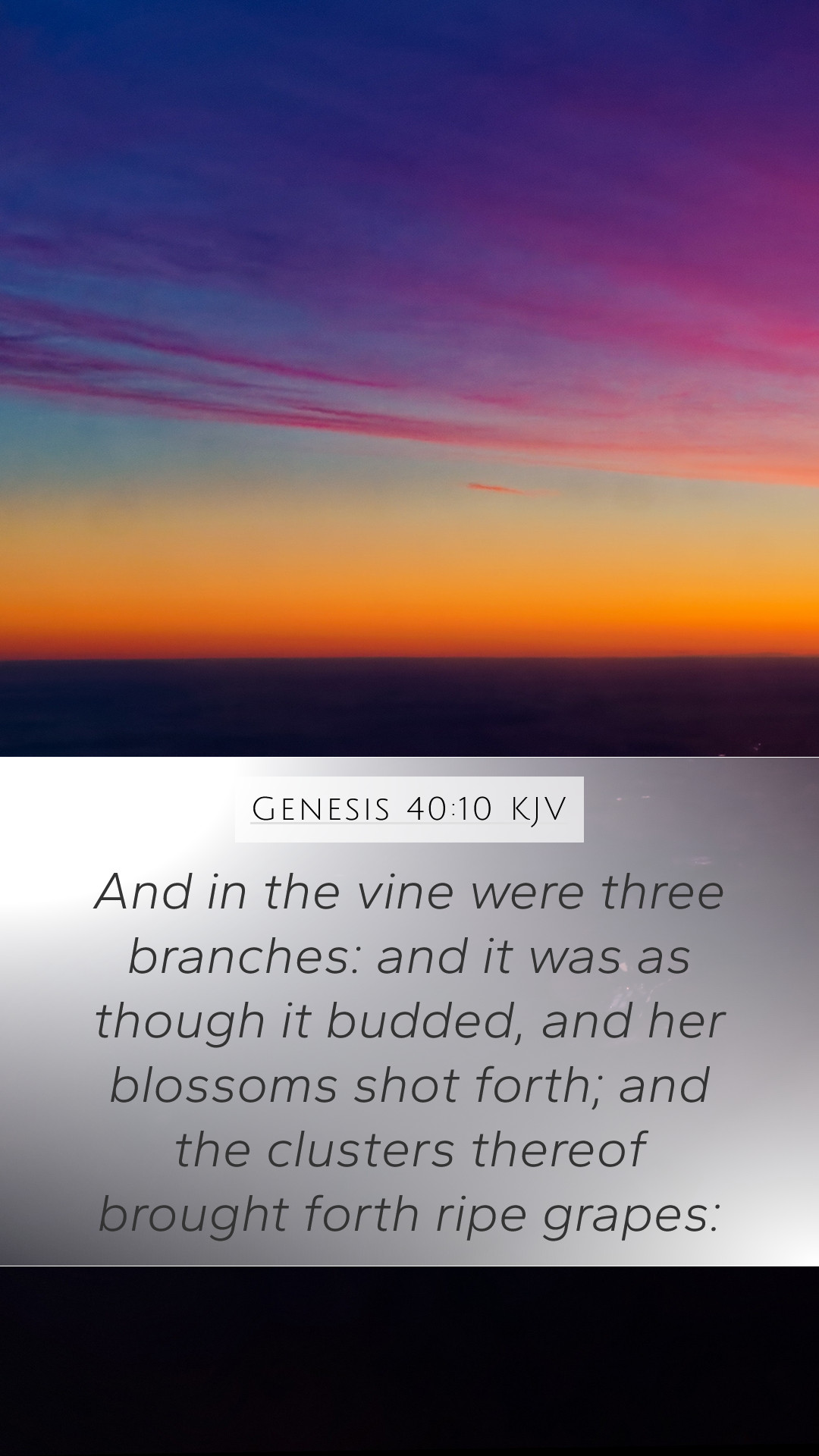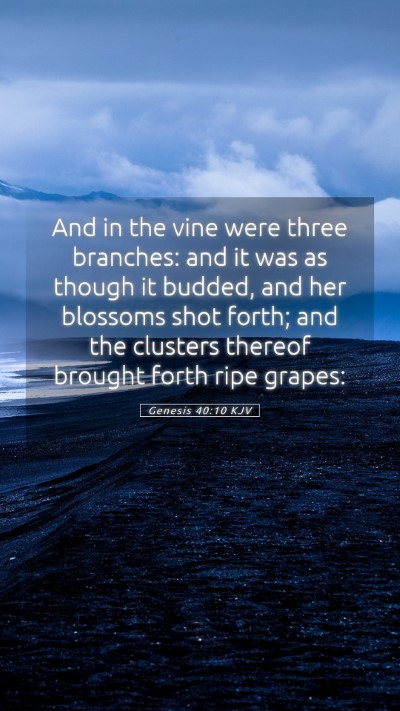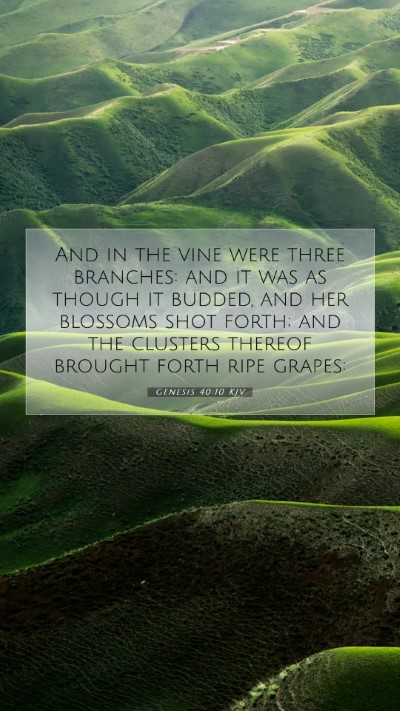Understanding Genesis 40:10
Genesis 40:10 states: "And in the vine were three branches: and it was as though it budded, and her blossoms shot forth; and the clusters thereof brought forth ripe grapes." This verse occurs in the context of Joseph's interpretation of the dreams of Pharaoh's butler, providing an insight into the unfolding of God's providential plan.
Bible Verse Meanings
This verse carries significant meanings encapsulated in its imagery of the vine, branches, and fruitfulness. Matthew Henry comments on how the vine represents Israel and is a metaphor for spiritual life and growth. The budding, blossoms, and grapes signify prosperity, joy, and abundance, reflecting God's blessings bestowed upon His people.
Bible Verse Interpretations
The interpretation of the vine's three branches can be understood through various lenses. Albert Barnes suggests that the three branches symbolize three days until the butler is restored to his position, revealing God's sovereignty over time and events. This numerical symbolism invites deeper examination concerning intervals of trial and deliverance.
Bible Verse Understanding
Adam Clarke elaborates further on the characteristics of the vine. The fruitful vine illustrates prosperity and life; it is a visual representation of hope. The interpretation leads to understanding the broader themes within Genesis regarding God's provision and promises.
Bible Verse Explanations
This verse serves as a turning point in the narrative of Joseph. It portrays a moment where God uses Joseph’s gift to not only provide a literal interpretation but also to underline God's presence in the affairs of humanity. This aligns with themes found throughout Scripture demonstrating divine intervention and care.
Scripture Analysis
The analysis of this verse allows for a deeper appreciation of God’s workings in complex human situations. Through Joseph’s experience, one sees a foreshadowing of redemption and the ultimate deliverance of Israel from famine, establishing a link with the Messianic line. This passage encourages believers to trust in God’s timing.
Biblical Exegesis
Exegesis of this text reveals multiple layers. It echoes back to the Jewish tradition of viewing the vineyard as a place of divine care and blessing (see Psalm 80:8-9). The vivid imagery draws connections to the New Testament, where Jesus describes Himself as the true vine in John 15:1, reinforcing the idea of spiritual nourishment and connectedness.
Bible Study Insights
- Application of Biblical Principles: This verse can inspire discussions in bible study groups about the nature of God's providence in personal circumstances.
- Hope in Trials: It can serve as a reflection for those in online bible study formats about how even in challenging times, God provides hope and fruitfulness.
Cross References
- Genesis 37:5-11 - Joseph's dreams foreshadowing his future.
- Psalm 80:8-19 - God’s care for His vineyard.
- John 15:1-5 - Jesus as the true vine, emphasizing the source of life and productivity.
Conclusion
The examination of Genesis 40:10 provides rich ground for understanding Scripture. The intertwining of symbolism and narrative within the passage speaks to the thoughtful study of bible verse commentary. Engaging with these insights not only enhances one's bible study materials but also cultivates a deeper relationship with God's word.


